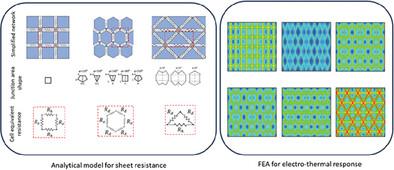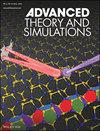Electro-Thermal Response of Thin Film Heaters Based on Embedded Periodic Metallic Mesh
IF 2.9
4区 工程技术
Q1 MULTIDISCIPLINARY SCIENCES
引用次数: 0
Abstract
Here, the electro-thermal response of thin film heaters is investigated for a wide range of periodic metallic mesh topologies. The aim of this study is to systematically investigate the effect of topology, in particular node connectivity, on the response of these networks. The study first defines the design space by deriving analytical expressions for geometrical dependencies and permissible parameters for each geometry Closed-formed analytical expressions are developed subsequently to calculate the network resistance considering junction area compensation. Finally, transient coupled electro-thermal finite element modelling (FEM) is performed across multiple topologies using automated geometry generation, meshing, analysis, and post-processing. The analytical expressions, incorporating junction area compensation, can quickly and accurately predict the resistance of the networks. Network topology significantly impacts the resistance, demonstrating variations of up to three times over the range investigated, when compared on the same fill factor basis. Higher resistance results in a faster response time when the current density is fixed. For the same power input, however, the response time is much more similar, though spatial temperature variation remain significant. These findings provide valuable insights for designing faster, more energy-efficient thin film heaters applicable to electronic displays, wearable technologies, energy systems, optics, photonics, and multifunctional devices.

求助全文
约1分钟内获得全文
求助全文
来源期刊

Advanced Theory and Simulations
Multidisciplinary-Multidisciplinary
CiteScore
5.50
自引率
3.00%
发文量
221
期刊介绍:
Advanced Theory and Simulations is an interdisciplinary, international, English-language journal that publishes high-quality scientific results focusing on the development and application of theoretical methods, modeling and simulation approaches in all natural science and medicine areas, including:
materials, chemistry, condensed matter physics
engineering, energy
life science, biology, medicine
atmospheric/environmental science, climate science
planetary science, astronomy, cosmology
method development, numerical methods, statistics
 求助内容:
求助内容: 应助结果提醒方式:
应助结果提醒方式:


